Castor oil after a hair transplant: benefits, instructions and alternatives
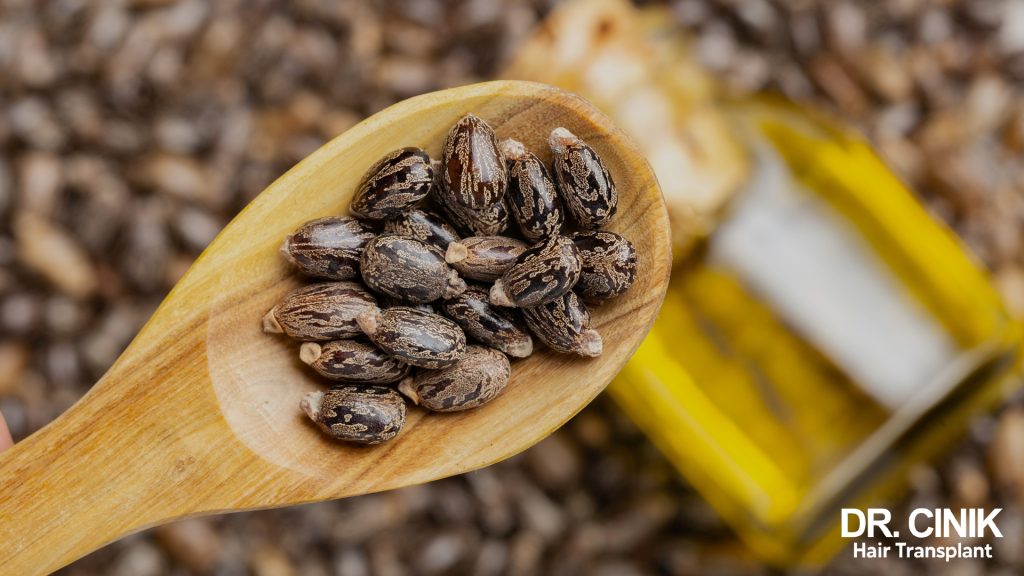
Sommaire
Castor oil is renowned for its exceptional moisturising and regenerative properties, making it an ideal ally for hair care, especially after a hair transplant. Discover the virtues of castor oil for the scalp and newly transplanted hair.
Understanding hair transplantation and post-operative care
Hair transplantation is a surgical procedure designed to restore hair growth in people suffering from pattern baldness (androgenic alopecia). The technique involves removing hair follicles from a dense area and re-implanting them in thinning or balding areas.
The post-operative period is crucial to the success of the transplant. The scalp must be treated with the utmost care to promote graft take and avoid complications. Compliance with the surgeon’s instructions is essential, particularly concerning hair washing, sun exposure and physical activity.
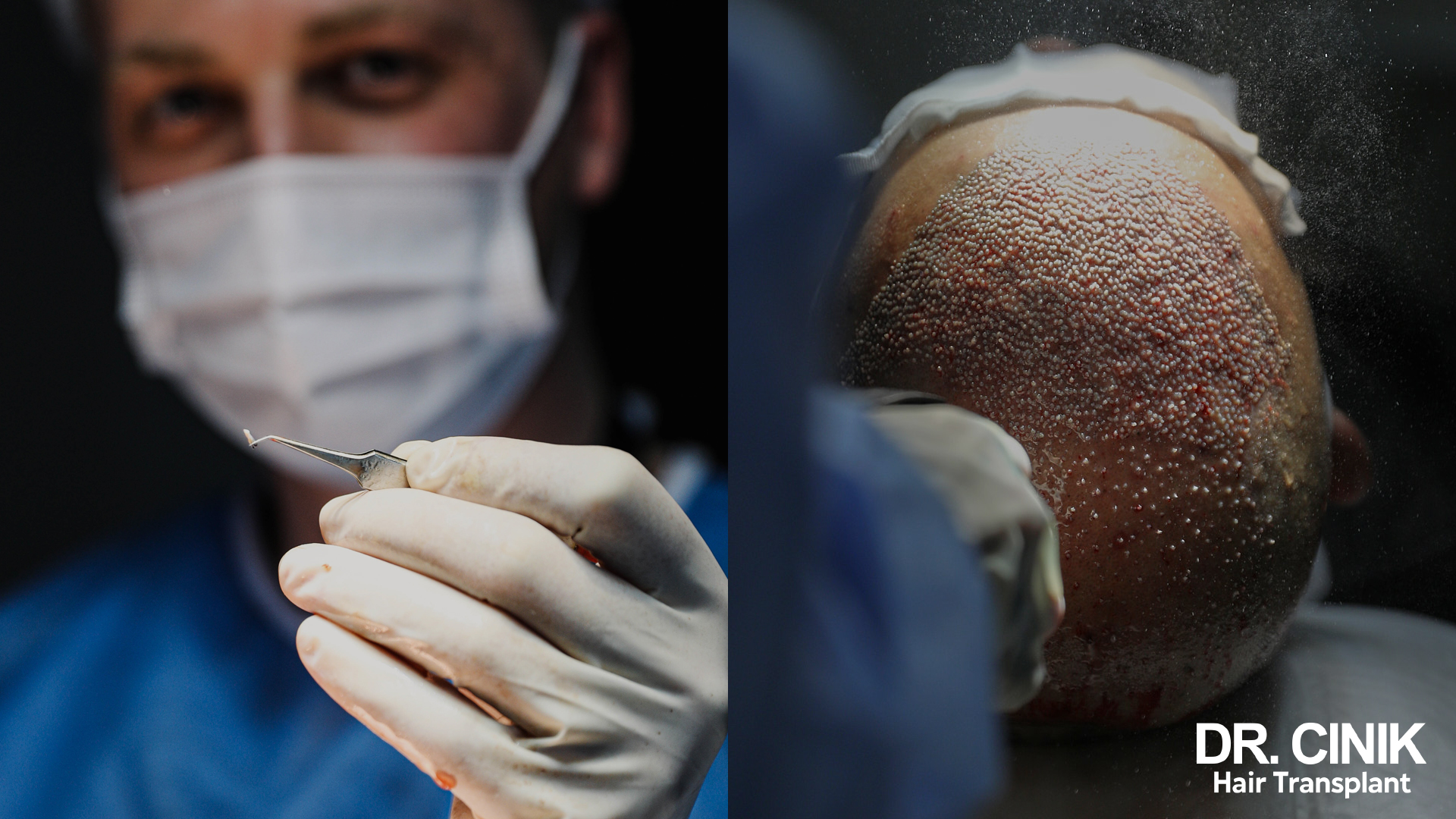
Post-transplant hair care plays a decisive role in hair regrowth. The right products can help reduce inflammation, nourish the scalp and strengthen new hair. Castor oil, in particular, is highly prized for its nourishing and strengthening properties. Rich in fatty acids, it moisturises the scalp and strengthens the roots, creating an environment conducive to hair growth. However, its application must follow a specific protocol to avoid disturbing the grafts. Alternatives to castor oil can also be considered, including serums and lotions specially designed for post-graft care, offering solutions tailored to each need.
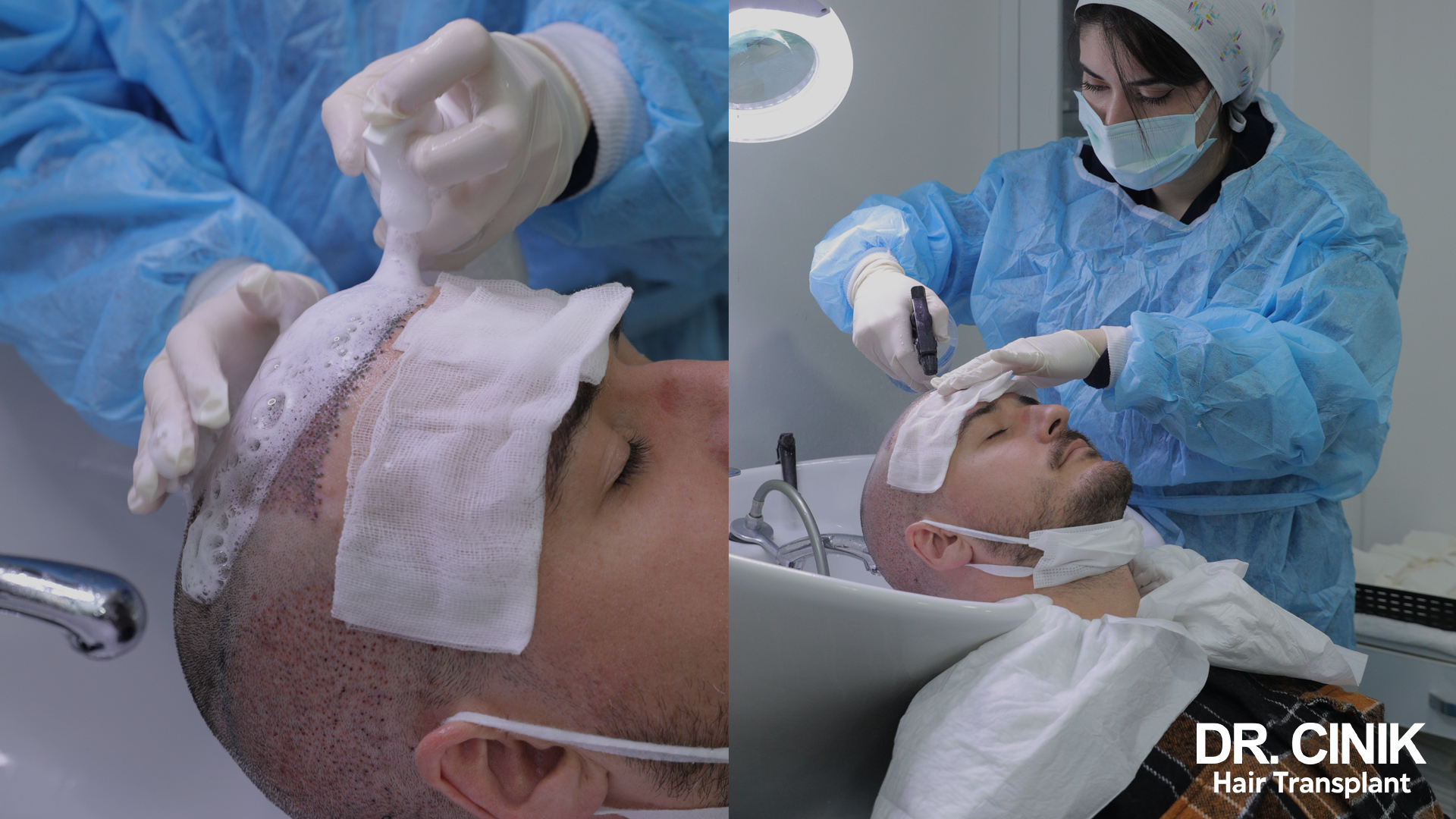
The benefits of castor oil for hair
Castor oil is a natural elixir renowned for its multiple hair virtues, stemming from its rich composition of essential fatty acids, notably ricinoleic acid. This unique component gives castor oil anti-inflammatory and moisturising properties, making it particularly suitable for hair and scalp care.
Benefits for hair growth and health
Castor oil’s notable benefits are its ability to stimulate hair growth. Ricinoleic acid improves blood circulation to the scalp, which helps nourish hair follicles. This promotes faster hair growth and can be beneficial after hair transplants when stimulating new follicles is paramount.
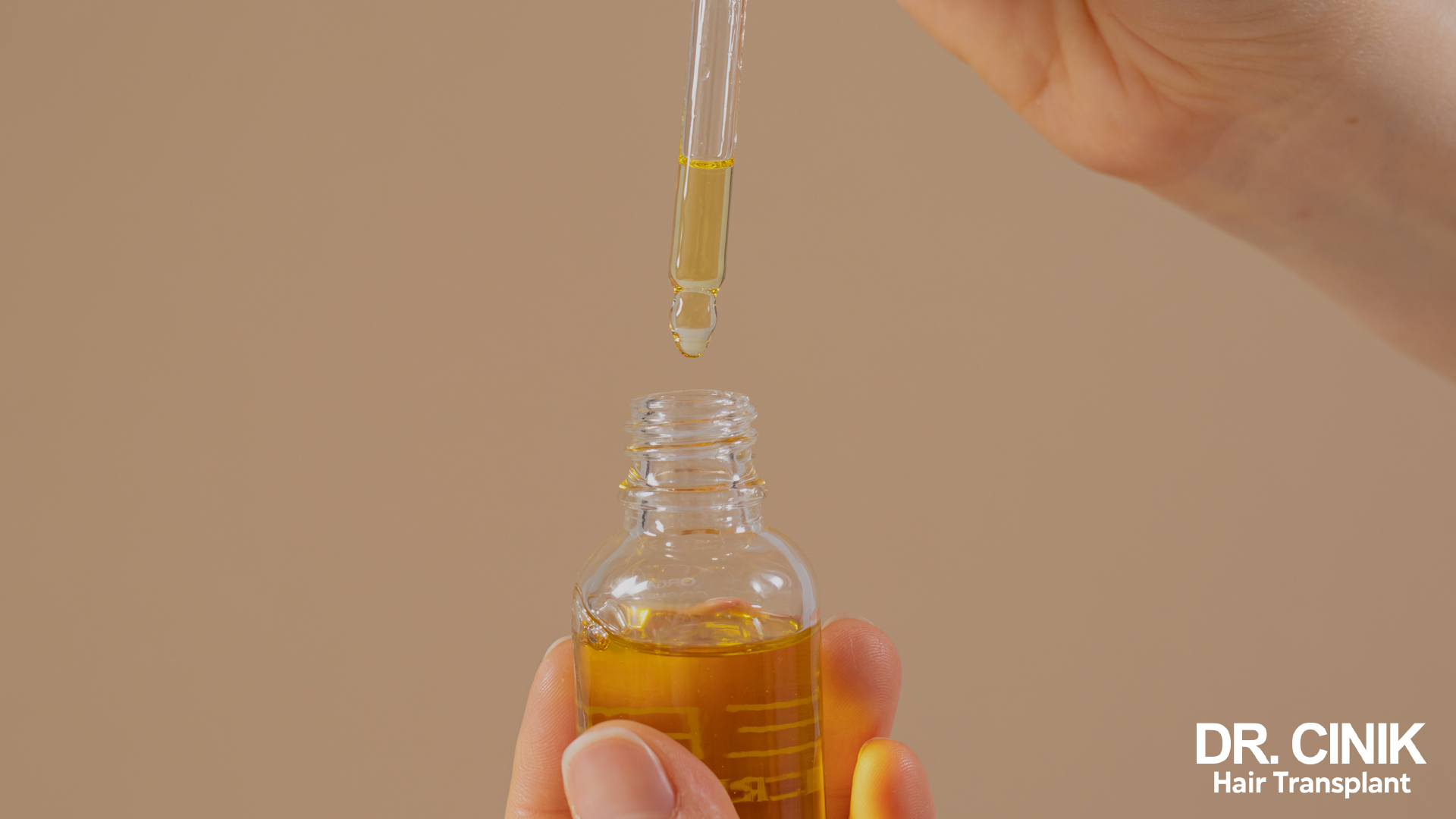
How to use castor oil after a hair transplant
Preventing damage and losing new hair, especially after a transplant, requires a gentle, systematic care routine. Because of its properties, castor oil can play a key role in this prevention. Here’s a recommended method of application to maximise its benefits while minimising risks to freshly transplanted hair: Make sure your hair and scalp are clean and dry before application. Apply a small amount of oil to the fingertips and gently massage into the scalp in circular motions. Avoid using fingernails or excessive pressure, which could damage the grafts.
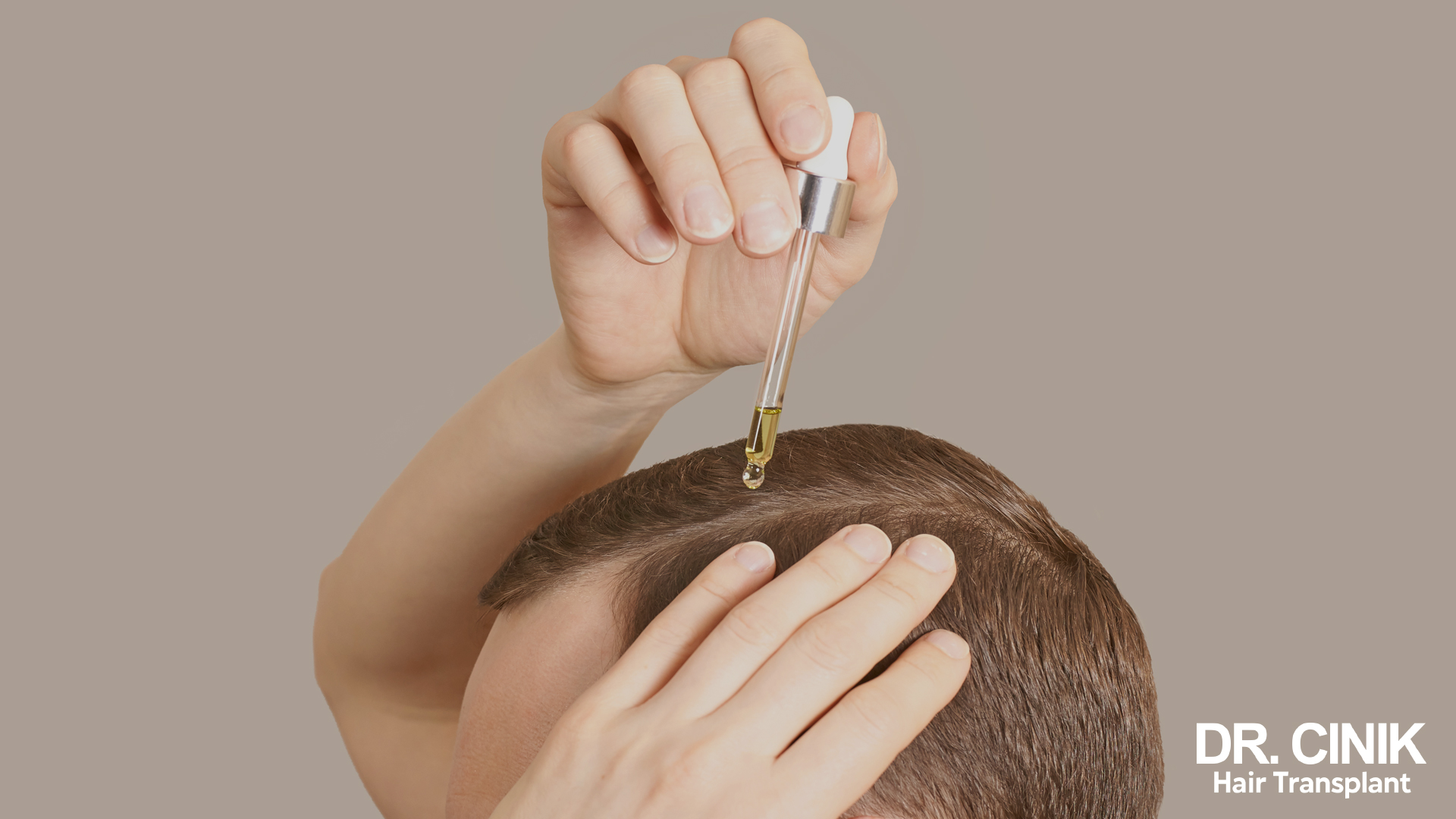
After a hair transplant, wait for your doctor to give you the green light before starting any new hair routine, including castor oil. If you experience a reaction such as irritation or increased inflammation, discontinue use and consult your doctor.
Alternatives to castor oil for post-transplant care
After a hair transplant, choosing care products that support healing and new hair growth without causing irritation is essential. While castor oil is widely recognised for its benefits, certain alternatives can also be used depending on individual needs and personal preferences.
- Argan oil: This precious oil is known for its nourishing and repairing properties. Rich in vitamin E and essential fatty acids, it is light and rapidly absorbed by the skin, making it an ideal option for moisturising the scalp and strengthening hair without weighing down grafts.
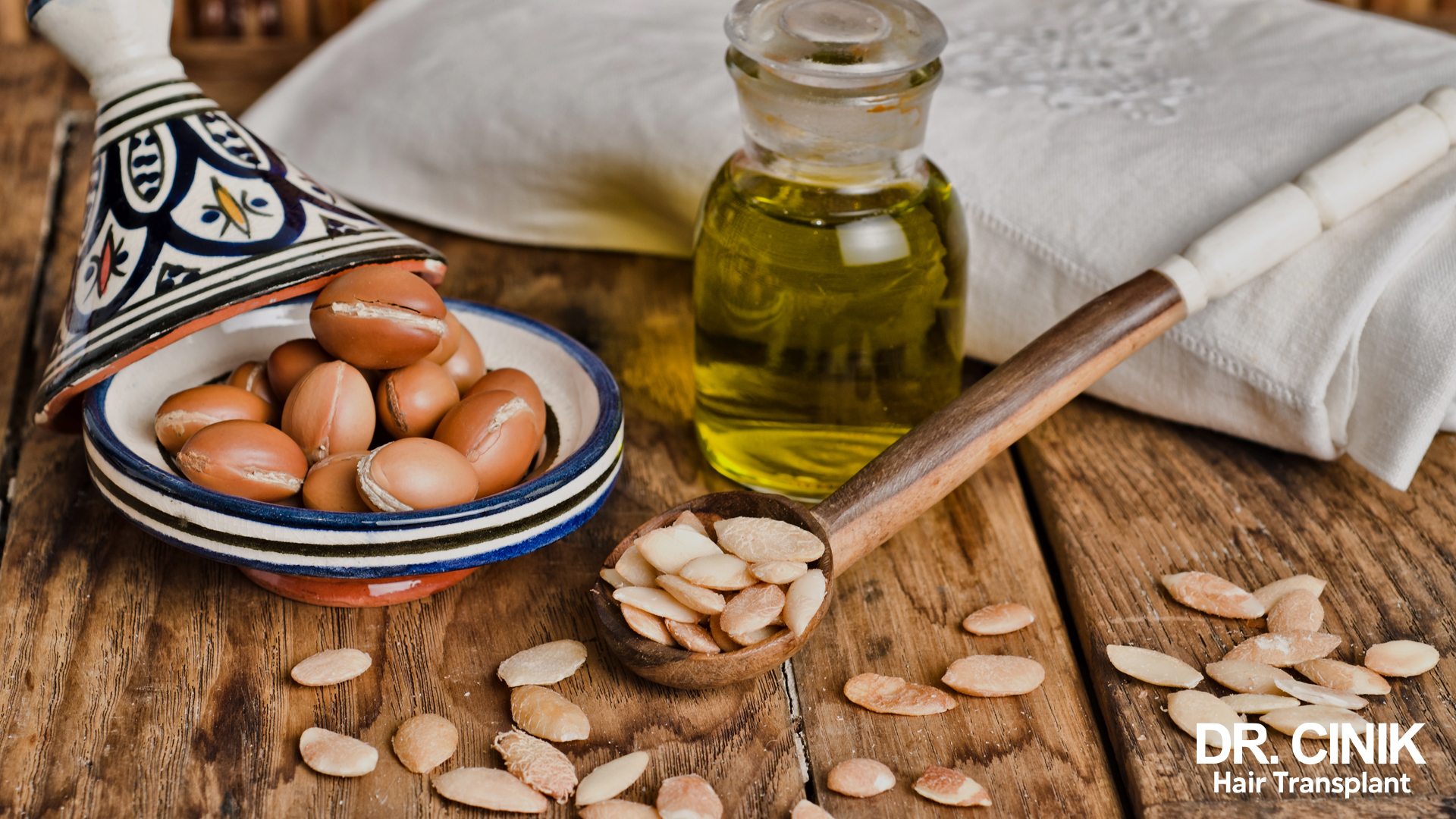
- Coconut oil: is prized for its ability to penetrate deep into the hair shaft, offering hydration and protection against lost proteins. Its antifungal and antibacterial properties can also help maintain a healthy scalp.

- Aloe vera gel: Aloe vera gel is a natural moisturiser that soothes and calms irritated scalps. Thanks to its anti-inflammatory and healing properties, it is particularly beneficial for treating post-operative inflammation and itching.

As with any new skincare product, it is advisable to carry out a skin test before general application to rule out any risk of allergic reaction. In addition, it is advisable to consult your surgeon for personalised recommendations tailored to your unique situation.
FAQ on castor oil and hair transplant
How soon can castor oil be used after hair transplantation?
The use of castor oil after a hair transplant must be approved by your surgeon. Generally, it is advisable to wait until the scalp has completely healed and all scabs have disappeared, which can take several weeks. Early application can irritate the skin and disrupt the healing process.
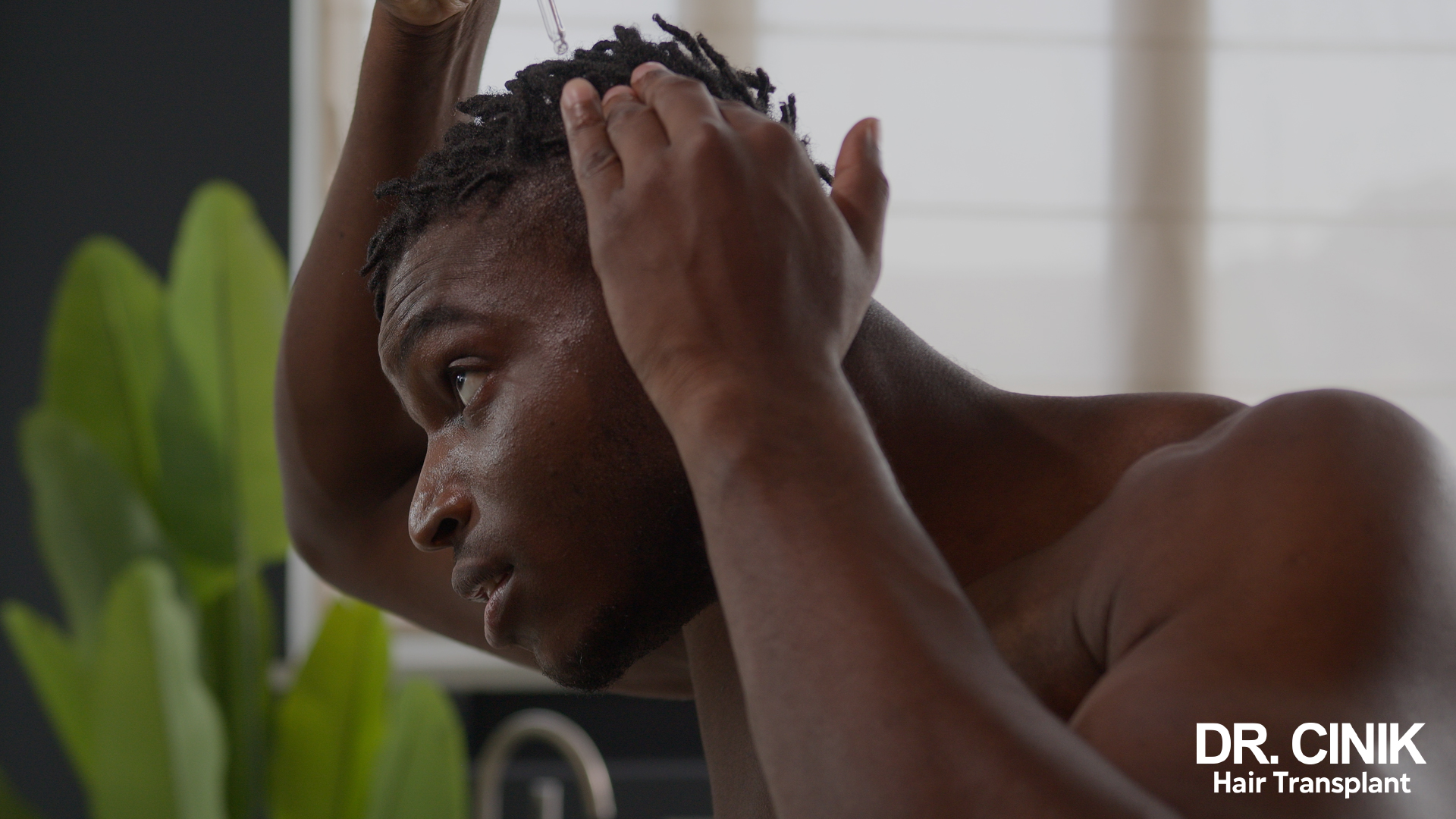
What to do if you react adversely to castor oil?
In the event of an adverse reaction, such as itching, redness or swelling, use of castor oil should be discontinued immediately. Wash the scalp with a mild shampoo to remove all traces of oil. Consult a health professional to assess the reaction and obtain advice tailored to your situation.
Can castor oil be used in conjunction with other treatments?
Castor oil can complement other hair treatments, provided it does not react with these products and your surgeon authorises it. It is important to respect the order in which products are applied and to monitor any reactions between substances to avoid negative interactions.
Castor oil is a valuable ally in post-hair transplant care thanks to its moisturising, anti-inflammatory, and growth-stimulating properties. For optimal use, it’s crucial to follow specific instructions concerning timing, quantity and frequency of application and to perform a preliminary test to detect allergic reactions. The importance of medical follow-up must be considered: you must follow your surgeon’s recommendations to ensure the best possible recovery and the long-term health and vitality of your transplanted hair.
 en
en



